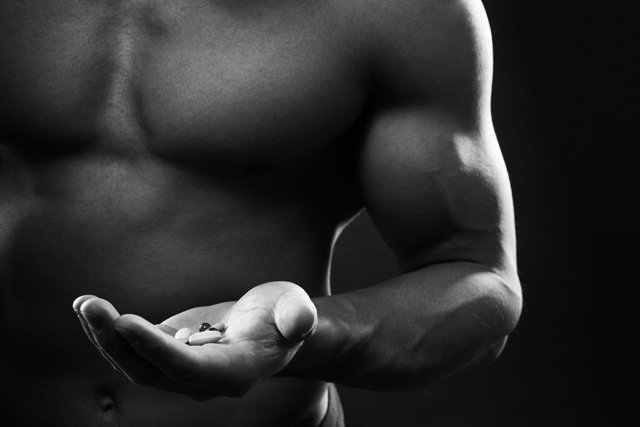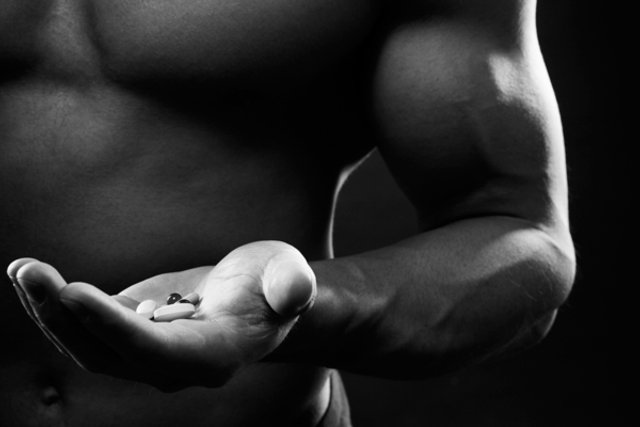Doping in sport corresponds to the use of prohibited substances that stimulate muscle growth or improve the athlete’s performance and physical resistance, artificially and temporarily, achieving better results in the sport they practice. Due to the fact that substances temporarily increase the athlete’s performance in the short term, it is considered a dishonest practice, so that athletes who test positive for doping are eliminated from competition.
Doping is more frequently detected during sporting competitions, such as the Olympics and the World Cup. Therefore, it is common for high-performance athletes to undergo an anti-doping test to check for the presence of prohibited substances in their bodies.

What is an anti-doping test for?
The anti-doping test serves to identify the presence of substances in the blood of athletes that can increase muscular strength and endurance, directly interfering with their performance, such as erythropoietin, furosemide, energy drinks and anabolic steroids.
Anti-doping tests are always carried out in competitions to check whether there was any fraud that may have interfered with the final result, and can be carried out before, during or after the competition. Normally, winners must take an anti-doping test to prove that they did not use substances or methods considered doping. Furthermore, exams can also be taken outside the competition period and without prior notice, with athletes chosen through a draw.
How the anti-doping test is carried out
The examination can be carried out by collecting and analyzing a blood or urine sample, which are evaluated with the aim of identifying the presence or absence of prohibited substances. Regardless of the amount of the substance, if any prohibited substance circulating in the body, or products of its metabolism, is identified, it is considered doping and the athlete is penalized.
According to the Brazilian Doping Control Authority (ABCD), doping is also considered to be evasion or refusal to collect a sample, possession of a prohibited substance or method, and fraud or attempted fraud at any stage of the doping process. .
Most used substances
The most used substances that are considered doping are those that increase muscle strength and endurance, reduce pain and the feeling of fatigue. Some of the main substances used are:
- Erythropoietin (EPO): helps increase cells that carry oxygen in the blood, improving performance;
- Furosemide: powerful diuretic that helps to lose weight quickly, used mainly by combat athletes in weight categories. It also helps to dilute and hide other prohibited substances in urine;
- Energy: increase attention and disposition, reducing the feeling of tiredness;
- Anabolics: hormones used to increase strength and muscle mass, the most frequently used being testosterone. Some substances can also imitate the effect of anabolic steroids, such as ostarine, which imitates the action of testosterone and is therefore also prohibited.
Furthermore, athletes and their team receive a list of recommendations and medications that cannot be used during training as they contain substances considered illegal in sport.
It is necessary to be careful even when treating common diseases or conditions such as flu, menstruation, high cholesterol or skin problems, as even without the intention of doping, these medicines may contain a small amount of prohibited substances, which can cause the athlete is eliminated from the competition.
Why does doping help athletes?
Using chemicals that are not natural to the body helps improve the athlete’s overall performance, bringing advantages such as:
- Increase concentration and improve physical capacity;
- Relieve exercise pain and reduce muscle fatigue;
- Increase muscle mass and strength;
- Relax the body and improve concentration;
- Help you lose weight quickly.
Therefore, taking these substances causes the athlete to have faster and better results than they would achieve through training and diet alone, and that is why they are prohibited in sport.
However, even with the ban, many athletes tend to use these substances 3 to 6 months before the official competition, during their training to increase their success, then suspending their use to give the body time to eliminate the substances and the exam. anti-doping test is negative. However, this practice can be dangerous, as anti-doping tests can be carried out without prior notice.
Bibliography
- BRAZILIAN DOPING CONTROL AUTHORITY. Brazilian Anti-Doping Code. Available at: <http://abcd.gov.br/arquivos/Cdigo_Brasileiro_Antidopagem_2018.pdf>. Accessed on January 20, 2020
- BRAZILIAN DOPING CONTROL AUTHORITY. Doping. Available at: <http://www.abcd.gov.br/perguntas-e-respostas/238-dopagem>. Accessed on January 20, 2020
- THE WORLD ANTI-DOPING CODE INTERNATIONAL STANDARD. Prohibited list. 2018. Available at: <http://abcd.gov.br/arquivos/prohibited_list_2018_en_1.pdf>. Accessed on January 20, 2020
- BRAZILIAN PHARMACY. Doping: the educational role of the pharmacist. 2008. Available at: <http://www.cff.org.br/sistemas/geral/revista/pdf/4/034a038_entrevista_tanus.pdf>. Accessed on June 27, 2019
- NOMURA, Cibele F.; ROSSI, Adriana V. Doping. Available at: <http://gpquae.iqm.unicamp.br/presentacao/A5.pdf>.

Sign up for our newsletter and stay up to date with exclusive news
that can transform your routine!
Warning: Undefined array key "title" in /home/storelat/public_html/wp-content/plugins/link-whisper-premium/templates/frontend/related-posts.php on line 12
Warning: Undefined array key "title_tag" in /home/storelat/public_html/wp-content/plugins/link-whisper-premium/templates/frontend/related-posts.php on line 13





